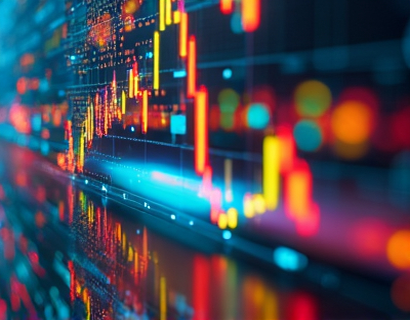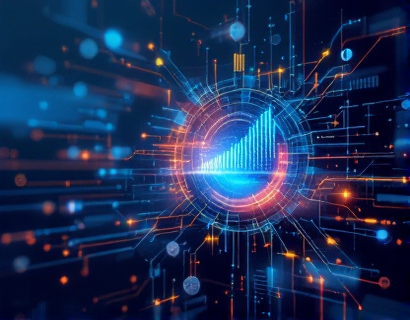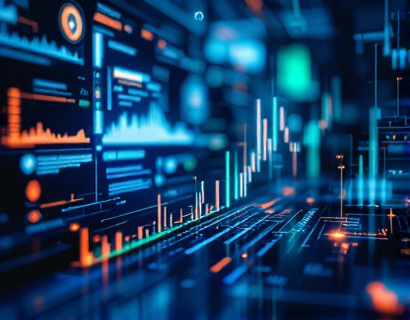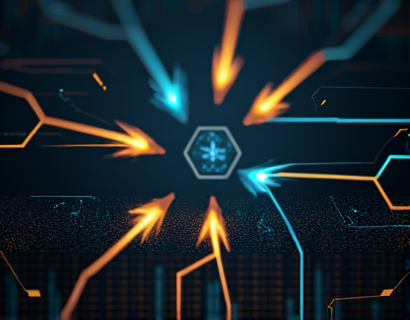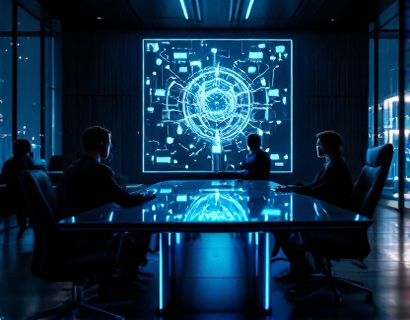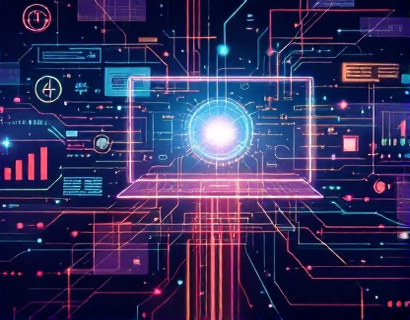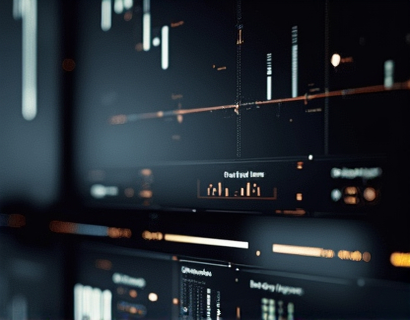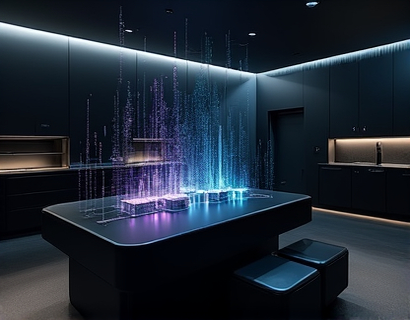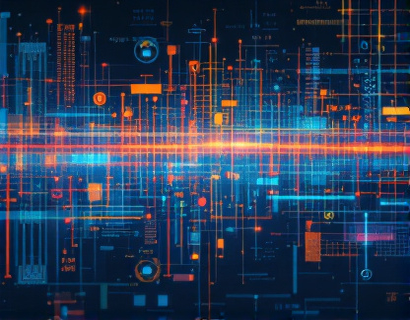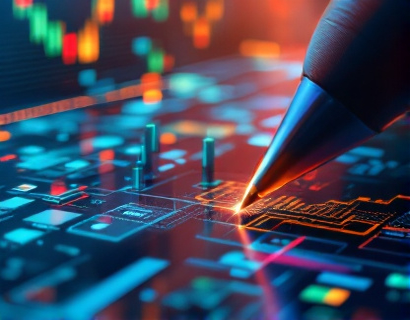Revolutionizing the Art World: Blockchain for Secure and Decentralized Tracking of Historical Artifacts and Cultural Treasures
The art world is on the cusp of a transformative shift, driven by the integration of blockchain technology. This innovative approach promises to revolutionize the way historical artifacts and cultural treasures are tracked, verified, and managed. By leveraging blockchain, the art community can ensure the secure and transparent tracking of valuable items, verifying their authenticity and provenance. This not only fosters trust and collaboration among collectors, museums, and cultural institutions but also safeguards our shared cultural heritage for future generations.
Blockchain technology, known for its role in cryptocurrencies, offers a decentralized and immutable ledger that can be applied to various sectors, including art. In the context of art and cultural heritage, blockchain provides a robust framework for documenting and verifying the history and ownership of artifacts. This technology can address longstanding issues such as forgery, illegal trafficking, and loss of provenance, which have plagued the art world for centuries.
Understanding Blockchain in Art
To grasp the potential of blockchain in the art world, it's essential to understand the basic principles of blockchain technology. A blockchain is a distributed database that records transactions across multiple computers in such a way that the registered transactions cannot be altered retroactively. Each block in the chain contains a cryptographic hash of the previous block, a timestamp, and transaction data. This structure ensures that once data is recorded, it is nearly impossible to change without consensus from the network.
In the art context, each transaction or event related to an artifact, such as its creation, sale, exhibition, or restoration, can be recorded on the blockchain. This creates an unbreakable chain of ownership and history, making it easier to verify the authenticity and provenance of artworks. The decentralized nature of blockchain means that no single entity controls the data, reducing the risk of tampering and increasing transparency.
Verifying Authenticity and Provenance
One of the most significant challenges in the art market is verifying the authenticity and provenance of artworks. Forgeries are rampant, and the lack of transparent records makes it difficult to trace an item's history. Blockchain technology can address these issues by providing a secure and immutable record of an artwork's journey from creation to current ownership.
When an artist creates a piece, the blockchain can be used to record the artwork's unique identifier, along with details such as the artist's signature, creation date, and materials used. Subsequent transactions, such as sales or exhibitions, are also recorded on the blockchain, creating a comprehensive and verifiable history. Collectors and institutions can access this information to confirm the artwork's authenticity and trace its ownership history.
For example, a painting by a renowned artist could have its blockchain record including the date of creation, the artist's signature verification, and details of each owner since its creation. This transparency not only builds trust but also adds value to the artwork, as buyers can be confident in their purchase.
Fostering Trust and Collaboration
The use of blockchain in the art world fosters a new level of trust and collaboration among various stakeholders. Collectors, museums, and cultural institutions can work together more effectively, sharing verified information and reducing the risk of fraudulent transactions. This collaborative approach can lead to more efficient and ethical art markets.
For collectors, blockchain provides a reliable way to invest in art with a clear understanding of the piece's history and value. Museums and cultural institutions can use blockchain to authenticate and manage their collections more effectively, ensuring that their assets are protected and properly documented. This technology also enables better cooperation between institutions, facilitating loans and joint exhibitions based on verified records.
Safeguarding Cultural Heritage
Beyond individual artworks, blockchain can play a crucial role in safeguarding cultural heritage as a whole. Historical artifacts and cultural treasures often face threats such as theft, destruction, and illegal trafficking. Blockchain can help track these items and ensure they are returned to their rightful owners or preserved for future generations.
For instance, in cases of stolen art, blockchain can provide a tamper-proof record of the item's original ownership and movement. This information can be used by law enforcement and cultural authorities to recover stolen pieces and prevent further illegal activities. Additionally, blockchain can help document and preserve the history of artifacts, especially those from regions with unstable political or social conditions.
Challenges and Considerations
While the potential benefits of blockchain in the art world are significant, there are also challenges and considerations to address. One of the primary challenges is the technical complexity of implementing blockchain solutions. Art institutions may require expertise in blockchain technology and data management to integrate these systems effectively.
Another consideration is the need for industry-wide adoption. For blockchain to truly transform the art market, it must be embraced by a majority of stakeholders. This requires collaboration and standardization efforts to ensure interoperability and consistency across different platforms and systems.
Privacy concerns also arise, as the transparent nature of blockchain means that all transactions are visible to network participants. While this transparency is beneficial for verifying authenticity, it is essential to balance this with the need for privacy in certain transactions, such as the sale of sensitive or private artworks.
Case Studies and Real-World Applications
Several initiatives and projects are already leveraging blockchain technology in the art world, demonstrating its potential and practical applications.
One notable example is the use of blockchain by the Museum of Modern Art (MoMA) in New York. MoMA has explored blockchain for provenance verification, creating a digital record of an artwork's history and ownership. This initiative not only enhances the museum's collection management but also provides a model for other institutions to follow.
Another project is the use of blockchain by the World Intellectual Property Organization (WIPO) to protect intellectual property related to art and cultural works. By recording copyright and ownership information on the blockchain, artists and creators can better protect their rights and ensure fair compensation.
Additionally, some private companies are developing blockchain-based platforms specifically for the art market. These platforms aim to provide a secure and transparent marketplace for buying, selling, and trading artworks, with built-in verification tools to ensure authenticity and provenance.
Future Prospects
The integration of blockchain in the art world is still in its early stages, but the future looks promising. As more institutions and stakeholders adopt this technology, we can expect to see significant improvements in the authenticity, provenance, and management of cultural artifacts and artworks.
One potential development is the creation of a universal blockchain platform for the art industry, facilitating seamless collaboration and data sharing. This platform could include features such as smart contracts for automated transactions, enhanced verification tools, and integrated databases for global art records.
Moreover, the combination of blockchain with other emerging technologies, such as artificial intelligence and the Internet of Things (IoT), could further enhance the art management ecosystem. For instance, AI can assist in analyzing and verifying the authenticity of artworks, while IoT devices can provide real-time monitoring and security for valuable items.
Conclusion
The application of blockchain technology in the art world represents a significant leap forward in ensuring the secure and transparent tracking of historical artifacts and cultural treasures. By verifying authenticity and provenance, blockchain fosters trust and collaboration among collectors, museums, and cultural institutions, ultimately safeguarding our shared cultural heritage for future generations. As the art community continues to explore and adopt this innovative approach, we can look forward to a more ethical, efficient, and secure art market.





